The evolution of Canadian currency is a fascinating journey that spans over two centuries. From the iconic banknotes of the Dominion of Canada to the innovative polymer bills and commemorative coins, the Canadian currency has undergone several transformations that reflect the nation’s rich heritage and diverse cultural identity. As a journalist, I am excited to explore the history, design, and security features of Canadian currency and provide insights into its future developments. In this article, we will delve into the different stages of Canadian currency evolution, from its origins to its latest innovations, and discover how it reflects the country’s unique identity and values.
A Rich History of Canadian Currency Design
Canadian currency design has a rich history that dates back to the 19th century. The first banknotes issued by the Bank of Canada in 1935 featured portraits of King George V and Queen Mary, as Canada was still a British Dominion at the time. However, the country’s national symbols, such as the beaver, the maple leaf, and the coat of arms, were gradually incorporated into the design. In the 1950s, Canadian banknotes underwent a significant transformation when renowned Canadian artist Yousuf Karsh was commissioned to create portraits of prominent Canadians for the series. This led to a new era of currency design that celebrated Canadian culture and history. The 1970s saw more innovation in currency design, with the introduction of multi-coloured banknotes that featured holographic security threads and other anti-counterfeiting measures. In 1986, Canadian currency took on a distinctly modern look when the Bank of Canada introduced its “Birds of Canada” series of banknotes. These notes showcased some of Canada’s most iconic birds and landscapes and were celebrated for their artistic beauty. Today, Canadian banknotes continue to evolve with each new series featuring unique designs that reflect different aspects of Canadian culture and heritage. From its early days as a British Dominion to its present status as a diverse and multicultural nation, Canadian currency design has always been an important reflection of the country’s identity.
$5 polymer note
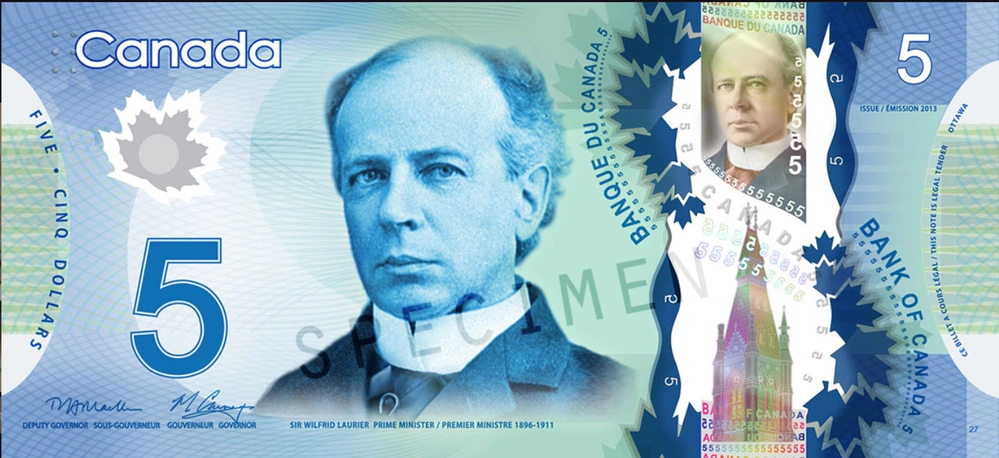
$10 polymer note
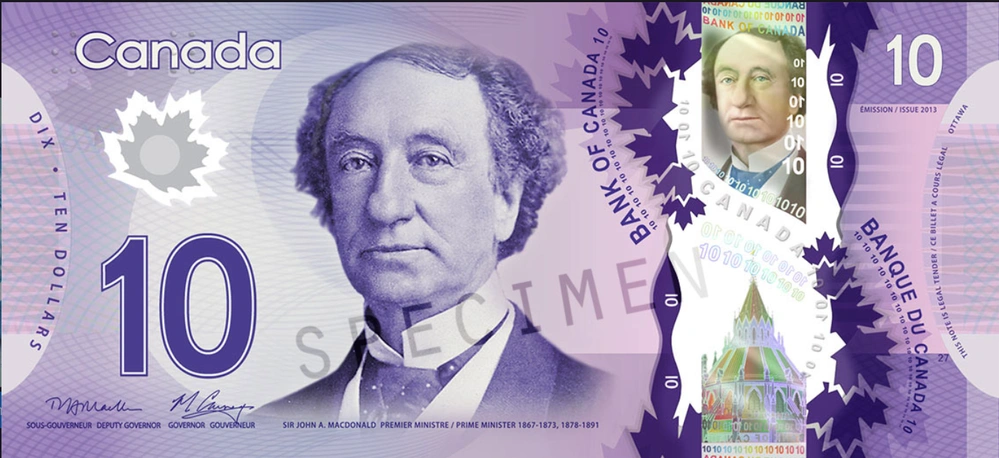
$20 polymer note
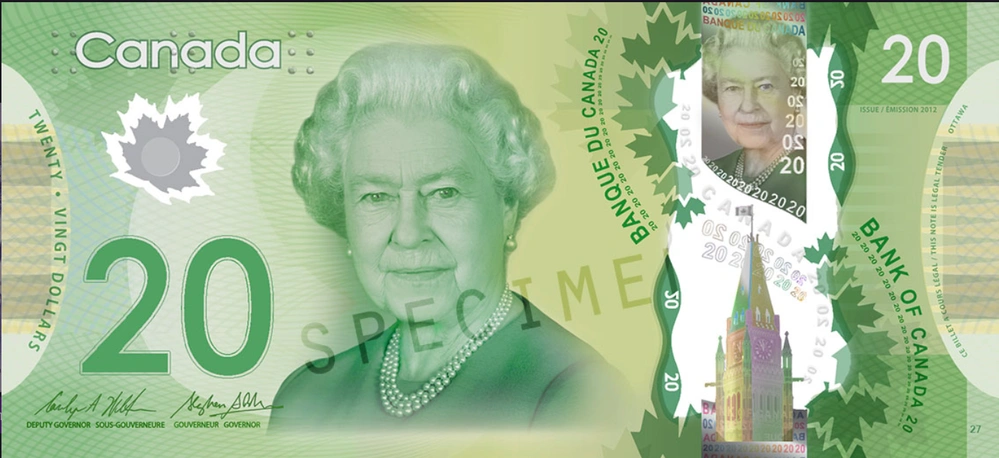
$50 polymer note
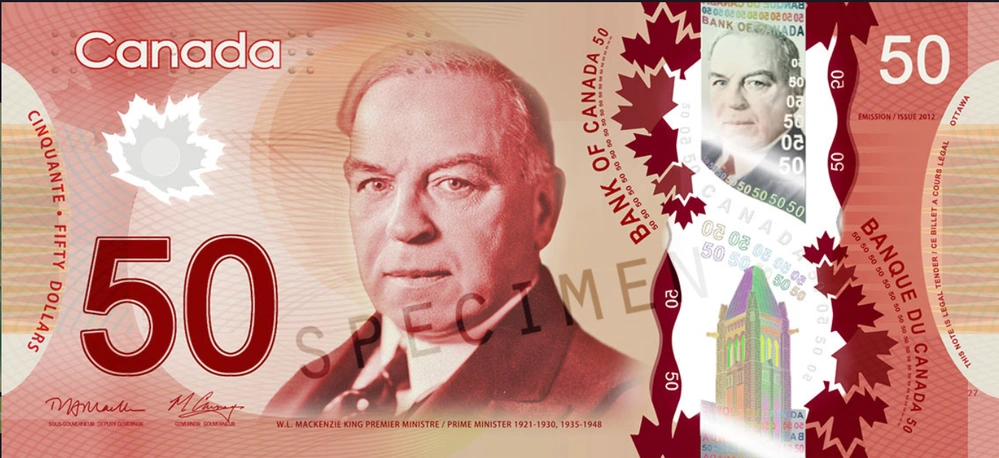
$100 polymer note
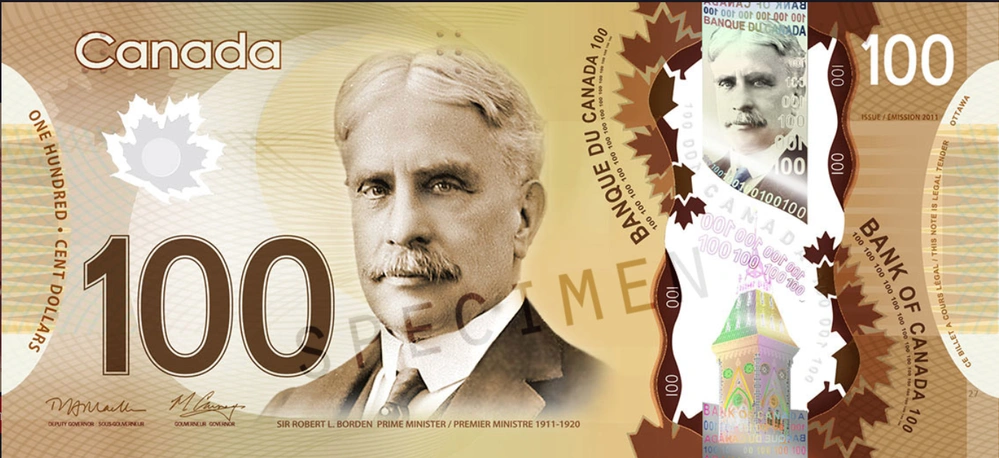
Canada’s First Banknotes: An Iconic Symbol of Nationhood
Canada’s first banknotes are an iconic symbol of nationhood. Issued in 1867, the year of Confederation, these banknotes were a tangible representation of Canada’s newfound independence and autonomy. The first series of banknotes featured portraits of prominent figures in Canadian history, such as Sir John A. Macdonald, Canada’s first prime minister, and Queen Victoria, the reigning monarch at the time. These banknotes also incorporated images of Canadian landscapes and wildlife, showcasing the country’s natural beauty.
However, the design of these early banknotes was not without controversy. Some critics argued that the inclusion of British monarchs on Canadian currency perpetuated a sense of colonialism and undermined Canada’s national identity. This led to calls for a more distinctly Canadian design for banknotes.
In response to these criticisms, subsequent series of banknotes featured images of Canadian landscapes and symbols, such as the maple leaf and beaver. These designs celebrated Canada’s unique identity and helped to establish a distinct visual language for Canadian currency.
Today, Canada’s banknotes continue to feature a range of notable Canadians, from civil rights activist Viola Desmond to astronaut Chris Hadfield. These individuals represent the diversity and achievements of Canadians from all walks of life. As such, Canada’s banknotes serve not only as a means of exchange but also as a reflection of the country’s history and values.
From Paper to Polymer: The Transition to Plastic Money
Innovative and futuristic, polymer banknotes have become the new norm in Canada’s currency. The Bank of Canada introduced these notes in 2011 to replace the traditional paper bills. Polymer banknotes offer several advantages over paper money. They are more durable and resistant to wear and tear, which means they last longer and can withstand repeated handling. Polymer notes are also more secure as they incorporate a range of sophisticated security features that make them difficult to counterfeit. These features include holographic images, transparent windows, and raised ink. The use of polymer notes has also been beneficial for the environment as they are recyclable and produce fewer greenhouse gases during their production process. The transition from paper to polymer money has not been without its challenges, however. Some people have found it difficult to get used to the new feel of the notes as they are smoother and less pliable than paper money. Additionally, some vending machines and cash registers have had trouble accepting the new notes due to their different texture. Despite these initial difficulties, Canadians have come to embrace polymer money as a symbol of innovation and progress. Today, polymer banknotes are an integral part of Canadian currency design and are used in denominations ranging from $5 to $100.
Honouring Canada’s Heritage: Commemorative Coins and Banknotes
Honouring Canada’s heritage is an important aspect of Canadian currency design, and commemorative coins and banknotes play a significant role in celebrating the country’s history and culture. Commemorative coins are issued to mark special occasions, anniversaries or events, while commemorative banknotes are designed to honour prominent Canadians who have contributed significantly to the country’s development. The first commemorative coin was issued in 1935 to celebrate the Silver Jubilee of King George V, and since then, numerous commemorative coins have been issued for various occasions such as the Vancouver 2010 Winter Olympics and Canada’s 150th anniversary in 2017. Similarly, commemorative banknotes featuring prominent Canadians such as Sir John A. Macdonald, William Lyon Mackenzie King, and Viola Desmond have been issued to honour their contributions to Canadian society. These banknotes not only pay tribute to these individuals but also serve as reminders of Canada’s rich history and diversity. In addition to honouring individuals, commemorative banknotes have also been issued to commemorate significant events such as the 150th anniversary of Confederation in 2017. Overall, commemorative coins and banknotes serve as a testament to Canada’s heritage and provide Canadians with a tangible link to their past.
Celebrating Diversity: Representation on Canadian Currency
Celebrating Diversity: Representation on Canadian Currency
Canada has always been a diverse country, and this is reflected in the design of its currency. The Bank of Canada has made efforts to represent the country’s diversity through the images and symbols on banknotes and coins. In 2018, Viola Desmond, a black Canadian civil rights activist, became the first woman other than Queen Elizabeth II to be featured on a Canadian banknote. Her image graces the ten-dollar bill, honouring her contribution to the fight against racial segregation in Canada. Additionally, the 2017 Canada 150 commemorative banknote series featured portraits of Indigenous leaders and personalities, such as James Gladstone and Inuit artist Kenojuak Ashevak.
The Bank of Canada has also recognised the importance of representing different cultural groups on its currency. The 2016 commemorative $5 coin features a design by Inuit artist Tim Pitsiulak, depicting an Inuit drum dancer. The same year, the Bank of Canada issued a commemorative $20 banknote to celebrate Eid al-Fitr, a Muslim holiday marking the end of Ramadan. The note features Arabic calligraphy and an image of mosque lamps.
By representing diverse individuals and cultures on its currency, the Bank of Canada sends a message about the importance of inclusion and acceptance. It also acknowledges that Canada’s history and identity are shaped by people from many different backgrounds. This representation on Canadian currency helps to educate Canadians about their own history and encourages them to learn more about other cultures.
Innovation in Currency Design: Security Features and Accessibility
Innovation in currency design is crucial to combat counterfeiting, and Canada has been at the forefront of this effort. The Bank of Canada has incorporated various security features in its banknotes, making them difficult to replicate. For example, the polymer banknotes feature a transparent window with a holographic image of the portrait, which changes colour when tilted. Moreover, there are raised ink features and hidden numbers that can only be seen under ultraviolet light. These features make it challenging for counterfeiters to produce fake currency. Accessibility is another critical aspect of currency design that has been taken into account by the Bank of Canada. The new series of banknotes have been designed with features that cater to the visually impaired, including large numerals and contrasting colours. The tactile feature on the banknotes also helps individuals with visual impairments identify the denomination of each bill. Additionally, the banknotes’ size has been increased to help people with physical disabilities handle money more easily. These innovative designs have made Canadian currency accessible to a broader range of individuals and have set a standard for other countries to follow. The Bank of Canada continues to research and develop new security features and accessibility designs for its currency, ensuring that Canadian banknotes remain secure and inclusive for all Canadians.
The Future of Canadian Currency: What’s Next?
As we move forward, the future of Canadian currency appears to be headed towards a more innovative and technological approach. The Bank of Canada has already started experimenting with digital currencies and blockchain technology. The Central Bank Digital Currency (CBDC) project is still in its early stages, but it could revolutionize the way we use money in Canada. With CBDCs, Canadians would be able to store and exchange digital money directly with the central bank, without the need for intermediaries like commercial banks. This would make transactions faster, cheaper, and more secure. The Bank of Canada is also exploring ways to make banknotes more accessible to the visually impaired community by incorporating tactile features and other accessibility measures. In addition, the use of contactless payment methods is becoming more prevalent in Canada, with tap-and-go debit and credit cards being widely adopted. As technology continues to advance, it’s possible that physical cash may become less common, but it’s unlikely that it will disappear entirely. Cash is still widely used by many Canadians, particularly for small transactions, and it remains an important part of our economy. Whatever the future holds for Canadian currency, it’s clear that innovation and technology will continue to play a significant role in shaping it.
The evolution of Canadian currency is a fascinating journey that reflects the country’s rich history, culture, and values. From the iconic images of nature, symbols of nationhood, to celebrating diversity and innovation in design, Canadian currency has come a long way. The transition from paper to polymer notes has not only made the currency more secure but also environmentally friendly. With the advent of new technologies, such as digital currencies and blockchain, the future of Canadian currency is uncertain. However, one thing is clear – it will continue to evolve with changing times and reflect Canada’s identity. As we move forward, it is essential to reflect on how currency design impacts our society and what we want our money to represent. How can we use currency design to promote social justice and inclusivity? It is up to us to shape the future of Canadian currency and make it a reflection of our collective values and aspirations.






Leave a Reply